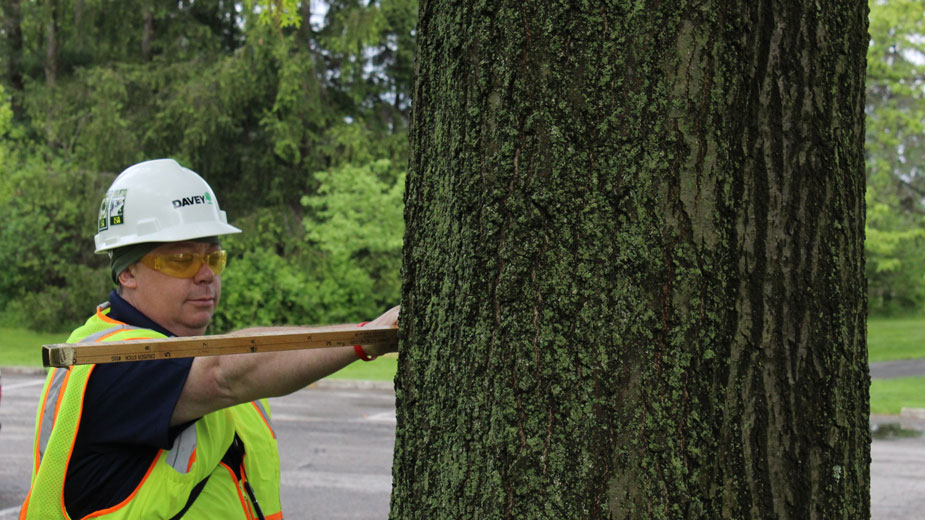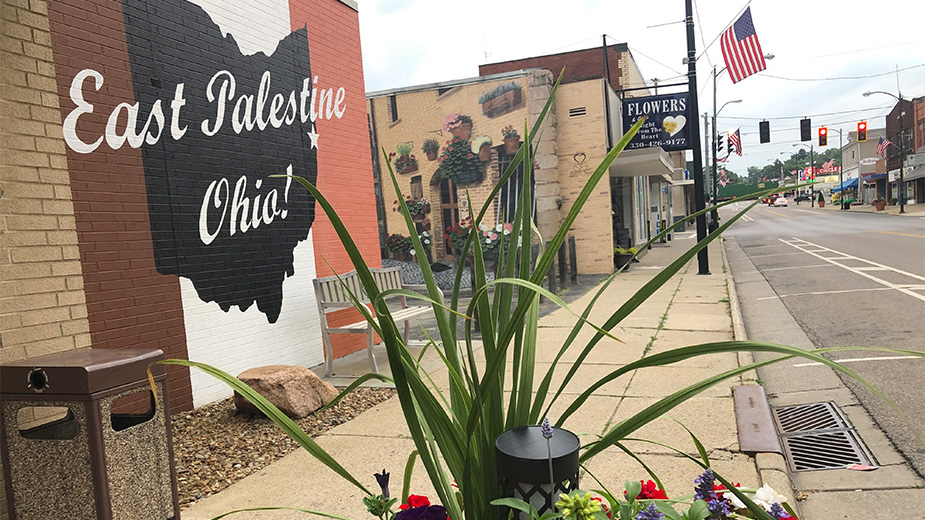Boardman Park Studies 400 Trees in ‘Green Oasis’
BOARDMAN, Ohio – By Dan Slagle’s count, there are some 400 trees in the northern portion of Boardman Park. That’s the section most visited, the park director says, and where the Green Oasis has its greatest impact.
And with more and more people coming every year – an estimated 450,000 visitors came to the park in 2015 – how the park looks plays as much of a role in its success as the entertainment it offers.
In an effort to know exactly what’s going on with the park’s trees, Boardman Park has enlisted Davey Resource Group, based in Kent, to create a tree management plan. Included are data on the location, size and species of each tree, as well as notes on how to maintain it and any damage.
“We can get good baseline data and combine it with our knowledge of urban forestry to help the park become more sustainable,” says Davey business developer Shirley Vaughn. “We want to give the park a clear picture of how they can care for this tree in the future. It helps them prepare.”
In early May, Davey Resource Group project manager Jim Jenkins took inventory of the trees on the northern 60 acres. The process for each tree is straightforward.
Using a GPS device connected to a portable computer, he marks the location of a tree on an aerial image of the park that doubles as a map. While the GPS system gets the position close, it’s up to Jenkins to pinpoint each tree’s spot and enter it into the system. Then, he measures its diameter with a Biltmore Stick – named for the Biltmore Estate in North Carolina where it was developed – and examines the tree for any sign of damage.
“For each and every tree, we do a 360-degree check to inspect it from all angles,” Jenkins says as he examines the trunk of an oak tree. “What we’re looking for are dead limbs and decay.”
Should there be any sign of damage, it’s noted in the computer file, along with the location, species and an age range. With the combined information, each tree is graded A through F.
Once the inventory is completed – Jenkins spent about four days inspecting the 400-plus trees – long-term management recommendations will be made. Should a tree be graded D or F, Jenkins will recommend three species of trees to replace it should it die. For other trees, notes will accompany many entries in the inventory on how it should be pruned to maintain structural integrity or how often it should be fertilized.
“Because of the digital files, we can track everything. We can edit the file and track our maintenance,” Slagle says. “If they tell us it needs to be fertilized every three years, we can mark when we do that and make a note on when we need to do it again.”
An analysis of the data will also be able to quantify the biodiversity of Boardman Park. By Slagle’s estimation, there are three-dozen species of trees in the northern sector.
“What we want to protect and preserve is the northern 60 acres where everything is landscaped and where people will use facilities,” he says. “The management of the natural habitat portion is left up to Mother Nature.”
Knowing the scope of biotic diversity gives Slagle a better handle to combat pests or disease taking hold of certain species of trees. He points to the emerald ash borer epidemic, which has wiped out many of the ash trees in the park. In time, the burrowing insect could destroy almost all of the ash trees in the area.
“In the world of horticulture, if there are monocultures – just one type of tree or plant – you’re making yourself susceptible to a major problem,” he explains. “If we had just ash trees, we’d lose everything.”
About 15 years ago, hardwood trees such as maples and oaks were planted in the park to diversify the ecosystem. Four years ago, a grove of redwood oaks was introduced. Near the front of the park, several types of maple hybrid have been planted. The impact of having a variety of trees has gone well beyond simply making the park environmentally sustainable.
Along the eastern and western borders of the park, pine trees block noise and views of busy roads and shopping plazas.
“It also adds some interest. Every tree and every variety has different characteristics, whether it’s texture or flower color,” Slagle says. “It keeps things interesting around the park.”
Trees also play in role in separating the park from the commercial areas that surround it.
When the management plan is complete, visitors to the park won’t notice many sweeping changes to its appearance. The difference will be in the quality of the trees, which will have effects beyond just appearance.
“Think in terms of something simple like shade or air quality for park-goers,” Vaughn says. “With this, trees can grow larger, be stronger and live longer, which means they’re providing those kinds of things better for a longer period of time.”
By Jenkins’ observation, the trees at Boardman Park are already healthy, making maintenance in the coming years easier and less costly.
“I’ve been doing this 15 years and these trees are extremely well-maintained and healthy,” he said as he measured a tree near the park office building. “A lot of park systems are struggling, but they’re doing well here in terms of their trees.”
Nothing like this has ever been done at Boardman Park before, says Slagle, who’s worked at the park 40 years. The only other entity in the Mahoning Valley to have a tree management plan is Youngstown State University, which Jenkins also helped with.
Pictured: Jim Jenkins, senior project manager for Davey Resource Group, measures a tree at Boardman Park. The measurement will be part of an inventory system the park uses to manage and maintain its trees.
Copyright 2024 The Business Journal, Youngstown, Ohio.



